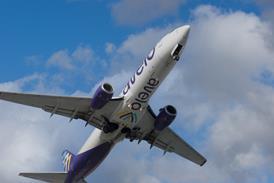The Federal Aviation Administration is reportedly poised to upgrade Mexico to “Category 1” safety status once again, clearing the way for airlines of both countries to add transborder capacity to their schedules.
The long-awaited upgrade is expected to come later this week, according to some news reports and industry observers.
“The US Federal Aviation Administration told the government of Mexico it will renew its [Category] 1 status this week,” writes Cowen financial analyst Helane Becker in a note published on 12 September. “This means the three Mexican airlines can once again resume growth into the United States.”
Local Mexican media have also reported that the FAA and Mexican authorities held final meetings about the aviation safety audit on the recovery of Category 1 last week.

The FAA meantime, does not confirm that information, saying only, “We continue to provide assistance to Mexico’s civil aviation authority. We expect to conclude the process in the near future”.
Executives at several US and Mexican airlines have been eagerly anticipating the FAA’s safety upgrade to Category 1 for more than a year.
The FAA downgraded Mexico’s safety status to Category 2, from Category 1, in May 2021. The US aviation regulator said at the time that the country and its civil aviation authority AFAC no longer met ICAO safety standards.
Category 2 designations mean the FAA does not view a country as having laws or regulations needed to support safe air travel, or that its civil aviation authority lacks adequate technical expertise, trained personnel, record keeping, inspection procedures or resolution of safety concerns.
While the FAA allowed existing air service between the countries to continue, the Category 2 designation restricted Mexican carriers from introducing new US routes and hindered US airlines’ ability to market and sell tickets on Mexican carriers via codeshare partnerships.
Mexican low-cost carrier Volaris has been eagerly awaiting the upgrade, saying it is prepared to add significantly to its schedule between the two countries. In April, the carrier said it would add about 30 aircraft to its operating specifications with the FAA to accommodate an expansion.
“We expect Volaris to start adding new US markets to their route network,” Becker adds. “We also expect them to increase service in some existing markets where there is strong demand. We expect that service to the US will increase almost immediately as Volaris pulls aircraft out of domestic markets and reallocates the capacity to the US.”
Guadalajara is an important hub for Volaris, she says, and the airline is expected to grow in the US from that city, primarily. “But we also expect them to look at replacing smaller aircraft with larger aircraft to take advantage of expansion opportunities.”
According to Cirium fleets data, Volaris has 114 Airbus A320 family aircraft in service, of which 57% are neo types.
Other carriers have also said they will increase connectivity between the USA and Mexico once the safety status is restored.
Ultra low-cost carrier (ULCC) Allegiant Air is awaiting US government approval of a joint venture with ULCC Viva Aerobus, which could also expand service significantly between the two countries.


























